Species M. oleifera Protein 9.4 g (per 100 g) Potassium 337 mg (per 100 g) Magnesium 147 mg (per 100 g) | Genus Moringa Scientific name Moringa oleifera Calcium 185 mg (per 100 g) Iron 4 mg (per 100 g) | |
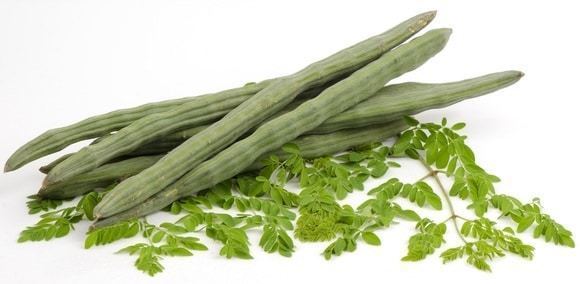 | ||
Similar Moringa, Turmeric, Maca, Okra, Horseradish | ||
Moringa oleifera is the most widely cultivated species of the genus Moringa, which is the only genus in the family Moringaceae. English common names include: moringa, drumstick tree (from the appearance of the long, slender, triangular seed-pods), horseradish tree (from the taste of the roots, which resembles horseradish), ben oil tree, or benzoil tree (from the oil which is derived from the seeds). It is a fast-growing, drought-resistant tree, native to the southern foothills of the Himalayas in northwestern India, and widely cultivated in tropical and subtropical areas where its young seed pods and leaves are used as vegetables. It can also be used for water purification and hand washing, and is sometimes used in herbal medicine.
Contents
- Moringa oleifera from seed to tree the complete guide to growing the superfood moringa
- Etymology
- Description
- Cultivation
- Production area
- Soil preparations
- Propagation
- Planting
- Breeding
- Yield and harvest
- Fruits
- Leaves
- Oil
- Pests and diseases
- Nutrients
- Drumsticks
- Seeds
- Seed oil
- Roots
- Malnutrition relief
- Culinary uses
- Traditional medicine and research
- Potential adverse effects
- Other uses
- Water purification
- References
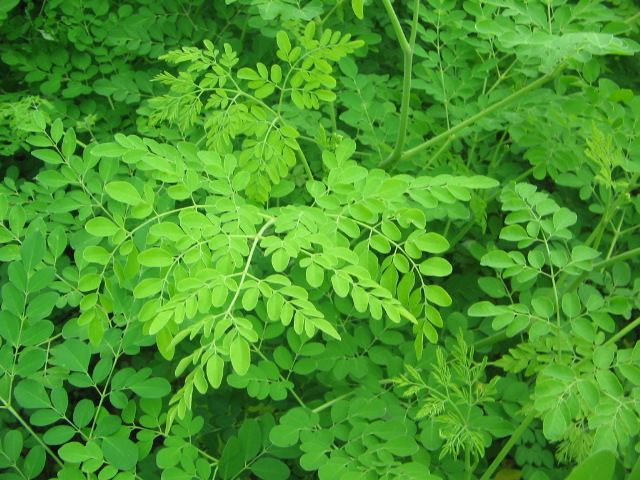
Moringa oleifera from seed to tree the complete guide to growing the superfood moringa
Etymology
Moringa derives from the Tamil word, 'murungai', referring to a twisted pod found in young fruit.
Description

M. oleifera is a fast-growing, deciduous tree that can reach a height of 10–12 m (32–40 ft) and trunk diameter of 45 cm (1.5 ft). The bark has a whitish-grey colour and is surrounded by thick cork. Young shoots have purplish or greenish-white, hairy bark. The tree has an open crown of drooping, fragile branches and the leaves build up a feathery foliage of tripinnate leaves.
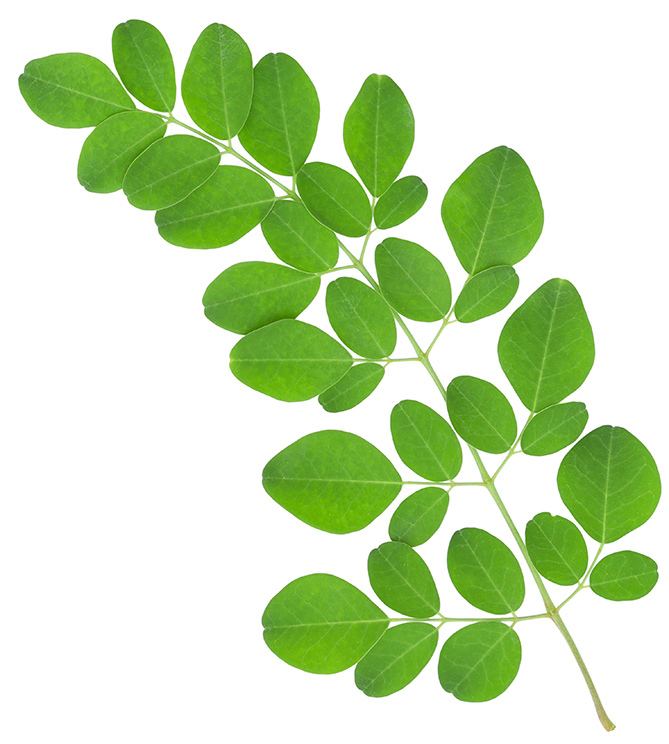
The flowers are fragrant and bisexual, surrounded by five unequal, thinly veined, yellowish-white petals. The flowers are about 1.0-1.5 cm (1/2") long and 2.0 cm (3/4") broad. They grow on slender, hairy stalks in spreading or drooping flower clusters which have a length of 10–25 cm.
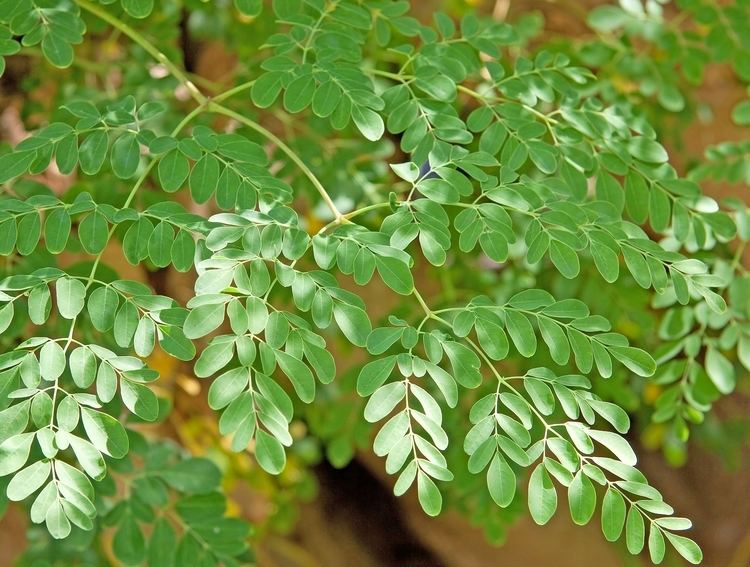
Flowering begins within the first six months after planting. In seasonally cool regions, flowering only occurs once a year between April and June. In more constant seasonal temperatures and with constant rainfall, flowering can happen twice or even all year-round.
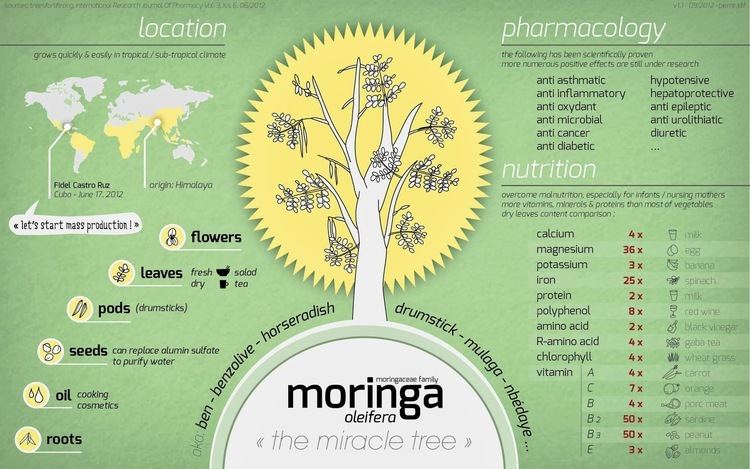
The fruit is a hanging, three-sided brown capsule of 20–45 cm size which holds dark brown, globular seeds with a diameter around 1 cm. The seeds have three whitish papery wings and are dispersed by wind and water.
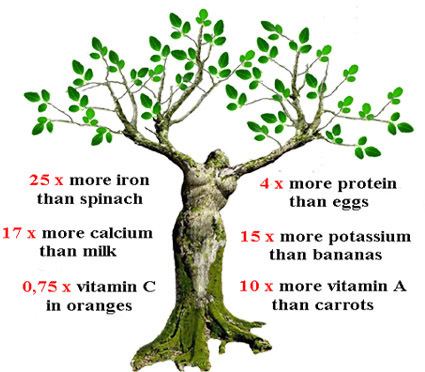
In cultivation, it is often cut back annually to 1–2 m (3–6 ft) and allowed to regrow so the pods and leaves remain within arm's reach.
Cultivation
The moringa tree is grown mainly in semiarid, tropical, and subtropical areas, corresponding in the United States to USDA hardiness zones 9 and 10. It tolerates a wide range of soil conditions, but prefers a neutral to slightly acidic (pH 6.3 to 7.0), well-drained sandy or loamy soil. In waterlogged soil, the roots have a tendency to rot. Moringa is a sun- and heat-loving plant, thus does not tolerate freezing or frost. Moringa is particularly suitable for dry regions, as it can be grown using rainwater without expensive irrigation techniques.
Production area
India is the largest producer of moringa, with an annual production of 1.1 to 1.3 million tonnes of fruits from an area of 380 km². Among Indian states, Andhra Pradesh leads in both area and production (156.65 km²) followed by Karnataka (102.8 km²) and Tamil Nadu (74.08 km²), a pioneering state having varied genotypes from diversified geographical areas and introductions from Sri Lanka.
Moringa is grown in home gardens in Odisha and as living fences in southern India and Thailand, where it is commonly sold in local markets. In the Philippines and Indonesia, it is commonly grown for its leaves which are used as food. Moringa is also actively cultivated by the World Vegetable Center in Taiwan, a center for vegetable research. In Haiti, it is grown as windbreaks and to help reduce soil erosion.
More generally, moringa grows in the wild or is cultivated in Central America and the Caribbean, northern countries of South America, Africa, Southeast Asia and various countries of Oceania.
As of 2010, cultivation in Hawaii, for commercial distribution in the United States, is in its early stages.
Soil preparations
In tropical cultivation, soil erosion is a major problem. Therefore, the soil treatment has to be as shallow as possible. Plowing is required only for high planting densities. In low planting densities, "it is better to dig pits and refill them with the soil. This ensures good root system penetration without causing too much land erosion. The pits must be 30 to 50 cm deep, and 20 to 40 cm wide."
Propagation
Moringa can be propagated from seed or cuttings. Direct seeding is possible because the germination rate of M. oleifera is high. Moringa seeds can be germinated year-round in well-draining soil. Cuttings of 1 m length and at least 4 cm diameter can be used for vegetative propagation.
Planting
For intensive leaf production, "the spacing of plants should be 15 x 15 cm or 20 x 10 cm, with conveniently spaced alleys (for example: every 4 m) to facilitate plantation management and harvests." Weeding and disease prevention are difficult because of the high density. In a semi-intensive production, the plants are spaced 50 cm to 1 m apart. This gives good results with less maintenance.
Moringa trees can also be cultivated in alleys, as natural fences and associated with other crops. The distance between Moringa rows in an agroforestry cultivation is usually between 2 and 4 meters.
Breeding
In India, from where moringa most likely originated, the diversity of wild types is large. This gives a good basis for breeding programs. In countries where moringa has been introduced, the diversity is usually much smaller among the cultivar types. Locally well-adapted wild types,though, can be found in most regions.
Because moringa is cultivated and used in different ways, there are different breeding aims. The breeding aims for an annual or a perennial plant are obviously different. The yield stability of fruits is an important breeding aim for the commercial cultivation in India, where moringa is cultivated as an annual. On less favorable locations, perennial cultivation has big advantages. Erosion is much smaller with perennial cultivation. In Pakistan, varieties have been tested for their nutritional composition of the leaves on different locations. The different breeding aims result in a different selection. India selects for a higher number of pods and dwarf or semidwarf varieties. Breeders in Tanzania, though, are selecting for higher oil content.
Yield and harvest
M. oleifera can be cultivated for its leaves, pods, and/or its kernels for oil extraction and water purification. The yields vary widely, depending on season, variety, fertilization, and irrigation regimen. Moringa yields best under warm, dry conditions with some supplemental fertilizer and irrigation. Harvest is done manually with knives, sickles, and stabs with hooks attached. Pollarding, coppicing and lopping or pruning are recommended to promote branching, increase production and facilitate harvesting.
Fruits
When the plant is grown from cuttings, the first harvest can take place 6–8 months after planting. Often, the fruits are not produced in the first year, and the yield is generally low during the first few years. By year two, it produces around 300 pods, by year 3 around 400–500. A good tree can yield 1000 or more pods. In India, a hectare can produce 31 tons of pods per year. Under North Indian conditions, the fruits ripen during the summer. Sometimes, particularly in South India, flowers and fruit appear twice a year, so two harvests occur, in July to September and March to April.
Leaves
Average yields of 6 tons/ha/year in fresh matter can be achieved. The harvest differs strongly between the rainy and dry seasons, with 1120 kg/ha per harvest and 690 kg/ha per harvest, respectively. The leaves and stems can be harvested from the young plants 60 days after seeding and then another seven times in the year. At every harvest, the plants are cut back to within 60 cm of the ground. In some production systems, the leaves are harvested every 2 weeks.
The cultivation of M. oleifera can also be done intensively with irrigation and fertilization with suitable varieties. Trials in Nicaragua with 1 million plants per hectare and 9 cuttings/year over 4 years gave an average fresh matter production of 580 metric tons/ha/year, equivalent to about 174 metric tons of fresh leaves.
Oil
One estimate for yield of oil from kernels is 250 l/ha. The oil can be used as a food supplement, as a base for cosmetics, and for hair and the skin.
Pests and diseases
The moringa tree is not affected by any serious diseases in its native or introduced ranges. In India, several insect pests are seen, including various caterpillars such as the bark-eating caterpillar, the hairy caterpillar or the green leaf caterpillar. The budworms Noctuidae are known to cause serious defoliation. Damaging agents can also be aphids, stem borers, and fruit flies. In some regions, termites can also cause minor damage. If termites are numerous in soils, insects management costs are not bearable.
The moringa tree is a host to Leveillula taurica, a powdery mildew which causes damage in papaya crops in south India. Cultivation management should therefore be checked.
Nutrients
Many parts of moringa are edible, with regional uses varying widely:
Leaves
Nutritional content of 100 g of fresh M. oleifera leaves (about 5 cups) is shown in the table (right; USDA data), while other studies of nutrient values are available.
The leaves are the most nutritious part of the plant, being a significant source of B vitamins, vitamin C, provitamin A as beta-carotene, vitamin K, manganese, and protein, among other essential nutrients. When compared with common foods particularly high in certain nutrients per 100 g fresh weight, cooked moringa leaves are considerable sources of these same nutrients. Some of the calcium in moringa leaves is bound as crystals of calcium oxalate though at levels 1/25th to 1/45th of that found in spinach, which is a negligible amount.
The leaves are cooked and used like spinach and are commonly dried and crushed into a powder used in soups and sauces.
Drumsticks
The immature seed pods, called "drumsticks", are commonly consumed in South Asia. They are prepared by parboiling, and cooked in a curry until soft. The seed pods/fruits, even when cooked by boiling, remain particularly high in vitamin C (which may be degraded variably by cooking) and are also a good source of dietary fiber, potassium, magnesium, and manganese.
Seeds
The seeds, sometimes removed from more mature pods and eaten like peas or roasted like nuts, contain high levels of vitamin C and moderate amounts of B vitamins and dietary minerals.
Seed oil
Mature seeds yield 38–40% edible oil called ben oil from its high concentration of behenic acid. The refined oil is clear and odorless, and resists rancidity. The seed cake remaining after oil extraction may be used as a fertilizer or as a flocculent to purify water. Moringa seed oil also has potential for use as a biofuel.
Roots
The roots are shredded and used as a condiment with sharp flavor qualities deriving from significant content of polyphenols.
Malnutrition relief
Moringa trees have been used to combat malnutrition, especially among infants and nursing mothers. Since moringa thrives in arid and semiarid environments, it may provide a versatile, nutritious food source throughout the year. Moringa leaves have been proposed as an iron-rich food source (31% Daily Value per 100 g consumed, table) to combat iron deficiency. However, further study is needed to test practical applications of using this dietary source and its iron bioavailability.
Culinary uses
Moringa has numerous applications in cooking throughout its regional distribution. It may be preserved by canning but is often made into a variety of curry dishes by mixing with coconut, poppy seeds, and mustard or boiled until the drumsticks are semisoft and consumed directly without any extra processing or cooking. It is used in curries, sambars, kormas, and dals, although it is also used to add flavor to cutlets and other recipes.
The fruit meat of drumsticks, including young seeds, is used for soup. Young leaves can either be fried with shrimp or added as a topping in fish soup. Several traditional dishes use leaves (sluc) of the moringa tree known as daum m'rum, such as korko (a mixed vegetable soup). As it is a favorite vegetable, Cambodians traditionally grow moringa trees close to their residences.
Tender drumstick leaves, finely chopped, are used as garnish for vegetable dishes and salads. It is also used in place of or along with coriander. In some regions, the flowers are gathered and cleansed to be cooked with besan to make pakoras.
The leaves may be fried and mixed with dried-fried tuna chips, onions and dried chillies. This is equivalent to a sambal and eaten along with rice and curry. Soup is made with the leaves and rice, and eaten especially for breakfast during Ramadan. It is also a common ingredient in an omelet. The pods are used to cook a mild curry.
Flowers may be first separated from the stem, boiled, mashed, and cooked. Other regions of Indian cuisine often uses moringa seed pods and leaves in curries. The long moringa seed pods are cut into shorter lengths and stewed in curries and soups. Because they are fibrous, seed pods are often chewed to extract the juices and nutrients, with the remaining fibrous material discarded. The flowers are mixed with gram flour and other spices, then deep fried into fritters to be served as snacks or added to curries.
The green pods, leaves, and flowers are used in a variety of Thai dishes, such as curries, stir-fries, soups, omelets, and salads. A traditional dish is sour Thai curry made with drumstick pods and fish.
Moringa leaves are commonly added to broth as a simple soup. The leaves may also be used as a typical ingredient in tinola, a traditional chicken dish consisting of chicken in a broth, moringa leaves, and either green papaya or another vegetable or in the all vegetable dish known as utan. The leaves can also be processed with olive oil and salt for a pesto-like pasta sauce. Moringa juice may be mixed with lemonsito juice to make ice candies or cold drinks. In Indonesia, the leaves are commonly eaten in a clear vegetable soup, often with corn, spinach and coconut milk.
Traditional medicine and research
The bark, sap, roots, leaves, seeds and flowers are used in traditional medicine. Research has examined how it might affect blood lipid profiles, although it is not effective at diagnosing, treating, or preventing any human diseases.
Extracts from leaves contain low contents of polyphenols which are under basic research for their potential properties. Despite considerable preliminary research on the biological properties of moringa components, there are few high-quality studies on humans to justify its use to treat human diseases.
Potential adverse effects
Various adverse effects may occur from consuming moringa bark, roots or flowers and their extracts, as these components contain chemicals that appear to be toxic when eaten. Moringa leaves have been used safely in doses up to 6 grams daily for up to 3 weeks.
Other uses
In developing countries, moringa has the potential to improve nutrition, boost food security, foster rural development, and support sustainable landcare. It may be used as forage for livestock, a micronutrient liquid, a natural anthelmintic, and possible adjuvant.
Moringa oleifera leaf powder was as effective as soap for hand washing when wetted in advance to enable anti-septic and detergent properties from phytochemicals in the leaves.
Water purification
Moringa seed cake, obtained as a byproduct of pressing seeds to obtain oil, is used to filter water using flocculation to produce potable water for animal or human consumption. Moringa seeds contain dimeric cationic proteins which absorb and neutralize colloidal charges in turbid water, causing the colloidal particles to clump together, making the suspended particles easier to remove as sludge by either settling or filtration. Moringa seed cake removes most impurities from water. This use is of particular interest for being nontoxic and sustainable compared to other materials in moringa-growing regions where drinking water is affected by pollutants.
